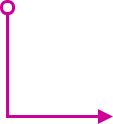


 Home
KS4
A2
Opts
Gall
Dates
KS3
Home
KS4
A2
Opts
Gall
Dates
KS3



Copyright © 2012 M.Kenny. All Rights Reserved
No parts of this website maybe copied or reproduced without permission
 Tuts
Tuts







 Research
Specification
Designing
Evaluation
Task Analysis
Research
Specification
Designing
Evaluation
Task Analysis

 Making
Making

 Start
Objs
Ass
Ext
Start
Objs
Ass
Ext


An example of how to layout the consumer profile sheets are shown below. Remember
you can use your own headings relevant to your own project. This shows one of the
possible ways of how you can layout your sheet if you need help and guidance. How
you lay this page out is again up to you, there are several ways.

Visual Profile: Collect images related to your consumer
- Set up a table and collect images that help to profile your consumer.
- This is an effective method of collecting useful information quickly

Persona: Use the data you have collected and create an “imaginary” character or persona
The information that you have gathered should give you clear understanding of the
general nature and characteristics of your typical intended consumer.
Use the data you have collected and create an “imaginary” character or persona.
Use that character to outline the characteristics of the user and their needs in
relation to your design problem.
Produce a number of headings that you can use to describe the persona.
Write a description of the persona under each heading as if that persona had written
it themselves:
- Age
- Background
- There every day traits
- Love & Hate
- Any other Appropriate Headings
Give your character a name, be sensible.
“Hi my name is Joshua and I am 11 years old. I love to play outside making my tree
house or with my favourite bike a “mountain Bike.”
The description of your imaginary charter should be a description of who your "typical“
intended consumer is. Use the list below to help you build up your persona. Hover
over the page below.
General Characteristics
- Age
- Gender
- Personality
- Occupation (what job they have, how much they earn)
- What appeals to them
- Geographical Location (where they live e.g. in the city, countryside, anywhere)
- Cost Limitation
- General Likes and Dislikes
- Preferred Brands and Products
- Hobbies and interests



Mark off where you would place yourself on the scale.
- This is a very effective way of asking potential consumers about their values and
believes.
- It allows the consumer to voice how strongly they feel about something.
- On one end you have a statement and on the other you have an opposite statement.
- People are asked to mark off where on the line they place themselves and are asked
to comment why they have placed themselves there.
- Try and develop a question for each of the points of ACCESS FM.


I prefer products that look really good. I prefer form over function and this really
appeals to me when choosing a product. What it looks like is more important to me
than what it does!
I prefer products that have lots of different functions. I prefer function over form
and this really appeals to me when choosing a product. I prefer a product that can
change style and has more than one function

As discussed some of the pages in your folder may look different depending which target you are aiming for. You will find which page you should be completing from the front cover of your folder. You can also look at what you need to have in terms of detail on each page from the assessment tab above.
The pages below give an example of the different levelled pages for a consumer profile. Text or writing in grey means that you do not need to complete this. However if you find the task easy you can have a go at these areas to improve your mark. As time goes by you should build your skills in producing a consumer profile and go up the levels until you are able to complete it completely independently and achieve a high grade.



LEVEL 3-4
Only attempt to use the first page a visual profile.
If you feel that you have successfully completed this you can than have a go at
attempting the next page.

Opposite you will see the Consumer Profile page that you will use in all areas of
technology. Each version has subtle differences so hover over each page and look
carefully. You find out which page to attempt from your targets found on your front
cover of your folder
Vids
Vids
Vids

LEVEL 4-5
Attempt the first page a visual profile and the second page poles apart.
If you feel that you have successfully completed this you can than have a go at attempting
the next page level 6.
LEVEL 6 and above
Attempt all three pages the visual profile, polls apart and the persona page.









Consumer Profile Polls Apart
Use the space to the side of your visual profile or below it to write up your polls
apart. Try and find out key information about the ACCESS FM points that will help
you meet your consumers needs and wants. Or a questionnaire to identify their key
needs and wants in the product that you are currently designing.

A consumer profile is a way of describing a consumer categorically such as their
behaviour, location, habits and so on which is important in targeting specific markets
and for advertisement purposes. The techniques now used to gather such information
are very sophisticated and demonstrate the importance of the knowledge-driven economy.
- Successful marketing starts by knowing who your customers are and what they need
and desire.
- In other words understanding how they think, feel and behave.
- There is no point wasting valuable time and money marketing your product to people
who aren’t interested in what you are selling.
Consumers can be identified by many different preference, lifestyle, life stage,
attribute, and trait categories. Thinking about consumers in terms of the way they
are represented by categorical tiers can be useful:
Categories for describing consumers

Demographics
Demographics is how you would describe your customer in terms of age, where they
live, gender, race, household size, income, occupation, education and country of
birth.
For example, the demographics of a customer who buys VW golf GTI may be male, age
30- 45 years, white collar occupation, household income greater than 30,000 with
children and targeting middle class, as well as the wealthier working class. Its
high price makes the new Golf also target the upper middle class. The consumer will
typically live in a three to four bedroom detached house. Golf’s five-door model
accounts for 70 per cent of all GTI sales and the steering as been adjusted on the
latest model so it can be set in comfort mode so that the Golf is smoothed out on
bumpy access roads. This shows it is aimed as a family car not at the boy racer so
to speak. Compare this to the consumer profile of someone who buys the Ford Focus
ST a very similar car.
There are websites including government websites that are good sources of information
to find out more about the demographics of the customers .
Psychographics
Psychographics is how you would describe your customers in terms of:
- Interests – the key social interests your customers engage in e.g. Golf
- General personality – the personality characteristics of your customers e.g. Conservative
- Where they “hang out” – what places on and offline do they network, socialize etc.
If you know your customer’s psychographics you can target specific marketing strategies,
promotional activities, sales drives and communication messages to your consumer.
For example would the over 60’s generation use Internet, Facebook, Twitter and You
tube advertising compared to someone in their late teens, early twenty’s?





- To produce a list of characteristics that a potential consumer has.
- To list the key features they would want in a potential product.
- You will learn about your potential client, likes, dislikes, spare disposable income
etc.
- You will Identify what features make a product innovative to your target market.




|
|
4 or less images have been collected in each column and 2 Polls apart questions.
Simple persona attempted
|
Between 4-5 images has been collected in each column and 3 Polls apart questions.
A good persona attempted
|
More than 6 images have been collected in each column and 4 Polls apart questions.
A very good persona attempted.
|
More than 6 images have been collected in each column and 5 Polls apart questions.
A very good persona attempted with some targets for designing.
|
More than 6 images have been collected in each column and 5 Polls apart questions.
A very good persona attempted with detailed targets for designing
|
More than 6 images have been collected in each column and 5 Polls apart questions.
An excellent persona attempted with very detailed targets.
|
|
3 COLUMNS
|
3
|
4
|
4
|
5
|
5
|
5
|
|
4 COLUMNS
|
4
|
4
|
5
|
5
|
6
|
6
|
|
5 COLUMNS
|
4
|
5
|
6
|
6
|
7
|
7
|
|
POLLS APART
|
5
|
6
|
6
|
7
|
8
|
8
|
|
PERSONA
|
6
|
6
|
7
|
8
|
Excep.
|
Excep.
|


 Home
KS4
A2
Opts
Gall
Dates
KS3
Home
KS4
A2
Opts
Gall
Dates
KS3



 Tuts
Tuts







 Research
Specification
Designing
Evaluation
Task Analysis
Research
Specification
Designing
Evaluation
Task Analysis

 Making
Making

 Start
Objs
Ass
Ext
Start
Objs
Ass
Ext





 Vids
Vids
Vids
Vids
Vids
Vids






































